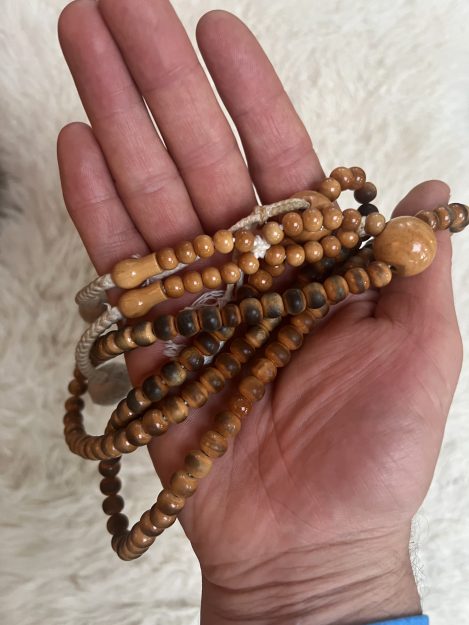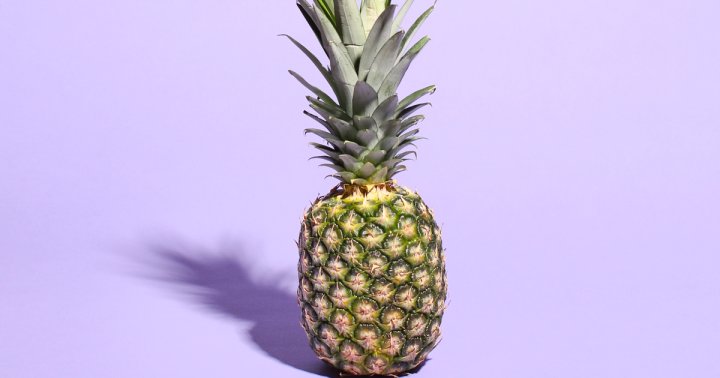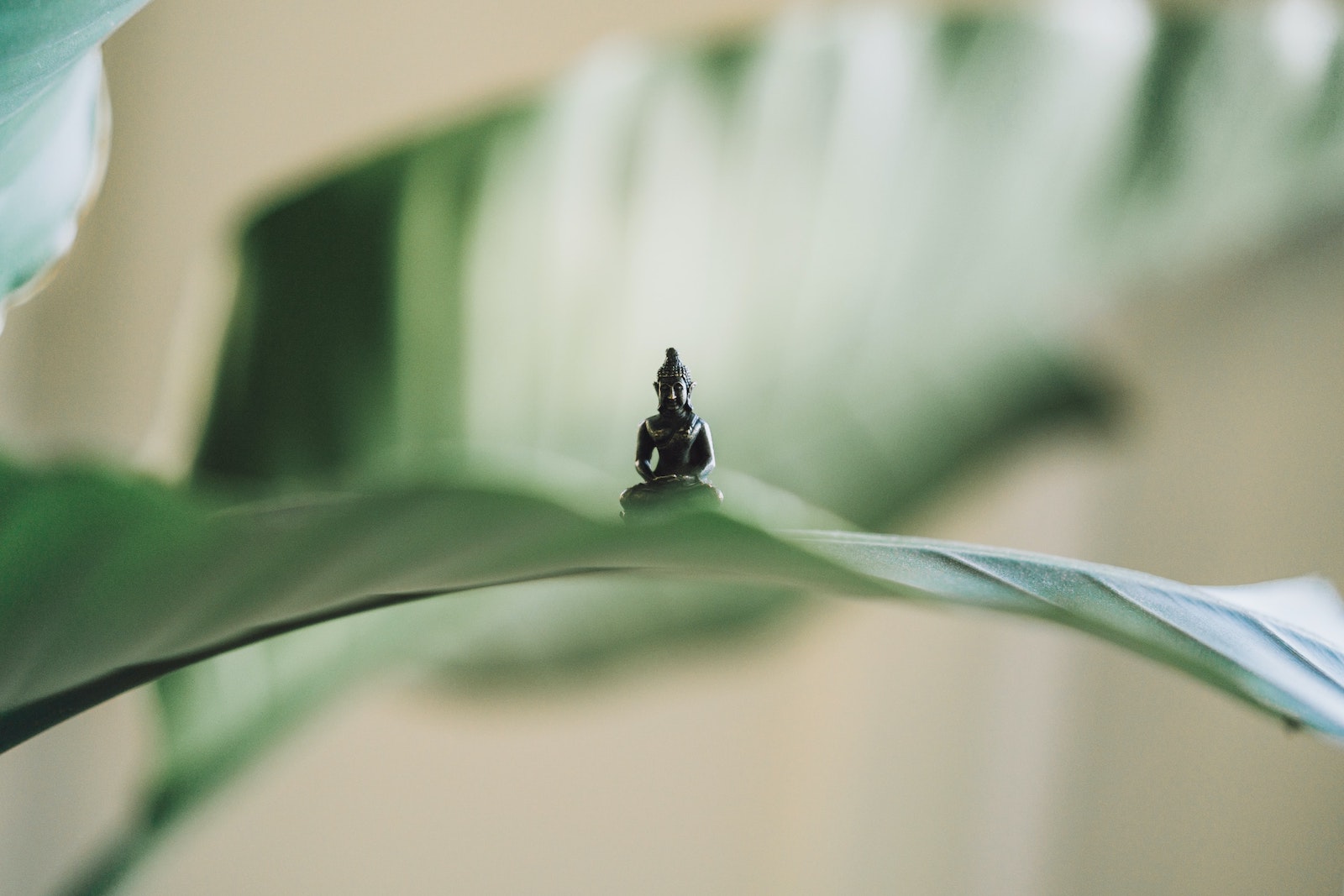Miguel Atwood-Ferguson on How Nichiren Buddhism Saved His Life
The multi-instrumentalist, composer, and Flying Lotus collaborator talks SGI, Bennie Maupin, and creating mystical soundtracks for cleaning the house. The post Miguel Atwood-Ferguson on How Nichiren Buddhism Saved His Life appeared first on Tricycle: The Buddhist Review.

To say that Miguel Atwood-Ferguson lives and breathes music is an understatement. The Los Angeles–based composer, arranger, multi-instrumentalist, conductor, producer, educator, and Flying Lotus collaborator has worked on more than 500 recordings in his career thus far, and he’s still just getting started.
Over the last fourteen years, Atwood-Ferguson amassed more than 500 hours of recordings planned for use on his debut album. That project, Les Jardins Mystiques, was finally released in November 2023 on independent label Brainfeeder, which specializes in experimental electronic and jazz music. It’s a massive body of work by all standards: fifty-two tracks across three discs, with a running time of three and a half hours, featuring more than fifty guest musicians. And this is only Volume 1 of a planned triptych.
The track titles on the album refer to various spiritual concepts, with Atwood-Ferguson’s inspiration here ranging from ancient Greek philosophy to Advaita Vedanta to Aldous Huxley’s universalist “perennial philosophy.” Spiritually observant in his own right, the classically trained violinist has been a practitioner of Nichiren Buddhism with the SGI (Soka Gakkai International) for the last twenty-four years. In a recent conversation with writer Stephan Kunze, Atwood-Ferguson opens up about how his practice helped him cope with his severe depression, how he worked with spiritual jazz legend Bennie Maupin, and his plans for the future.
This interview has been edited for length and clarity.
Could you start by describing who you were, before you found Buddhism? I grew up in a place called Topanga Canyon in western Los Angeles, a beautiful place up in the hills. I was really passionate about music and sports, but I [struggled] with depression. Both my parents struggled with depression, and so did my brother. And for the most part, they did pretty well handling it. They didn’t self-medicate with drugs and alcohol, which a lot of people do. Still, they didn’t have the verbal skills to talk about their depression. We tried to focus on art—and it did help a lot—but it wasn’t enough. Eventually, both my parents and my brother tried different [prescription] medications like Zoloft, Paxil, and Prozac, and it helped them a little bit, but I felt it kept them in this limiting bubble. [When] I went to college, my depression got really big, and I was so overwhelmed by life. I had these dreams in my heart, and I just felt like I didn’t have a functioning path that would help me manifest these goals, so I almost gave up on life. I was actually thinking about killing myself, and I already had a plan.
I’m very sorry to hear that. How old were you? I was 18 or 19 years old. But then the pianist in my jazz ensemble introduced me to the type of Buddhism that I practice now, and I just clicked with it. I had already studied some Zen and some other types of Buddhism. I love studying all philosophies and religions, and practices like qigong, t’ai chi, and Yoga. But it’s one thing to have fun studying these concepts, and it’s another thing to find a practice to fully commit to, like brushing your teeth and eating every day. That is a joyous thing, as difficult as these practices can be. So I found this SGI [Soka Gakkai International] practice, the same one that Herbie [Hancock] and Wayne [Shorter] have done, and Tina Turner. I just fell in love with it and started practicing daily, and pretty soon my depression just went away. I’ve not been suicidal since, and I’ve not had depression ever take a hold of me [since.] I’m not on medication; I’m just one of the lucky ones.
How did your family react? Did you speak to them about it and maybe even get them to try it as well? They are happy for me, but they don’t want me to talk to them about it. And I’m not dogmatic. I love my family, and I want them to be happy, but I also believe in their journey, and I believe [that they should be free to pursue] whatever resonates with them. It’s hard to not want to help them, but they don’t want my help. That’s been some tough medicine for me.
Can you speak more about your Buddhist community, the Soka Gakkai International? You already mentioned that a lot of musicians feel drawn to this practice. Well, I’m no authority, so I can only speak for myself and my own experience. But SGI Buddhism involves a lot of chanting. We have a mantra: “Nam-myoho-renge-kyo.” We also chant parts of the Lotus Sutra, the last sutra of Shakyamuni the Buddha, that he taught for the last eight years of his life. So the meditation involves sound, and it’s very activating. You get into a pattern. It’s actually in 6/8 meter. (begins chanting rhythmically and counting the meter) One two three, four five six, one two three… So you get into this deep trance-like state, and I think a lot of musicians—no, I’d rather speak just for myself—I can really relate to that. Also, SGI Buddhism is a lay Buddhist practice. There are no priests, and I really enjoy the lack of authority. There are leaders, but they’re all volunteers, dressed in everyday clothes. Our version of a temple is what we call a community center. It’s very accessible for common people, nonintimidating, and kind of user-friendly. Yes, it’s a religion, but it’s very open-minded and inclusive of all other religions. That’s very important to me: I don’t want to put distance between me and the people around me.
Please explain what your daily practice looks like. It’s a practice of chanting, studying, and going to discussion meetings. I chant twice a day. Sometimes, if I’m crazy busy, I’ll only chant once. I especially like chanting three times a day. The morning chant is usually as early as possible, once we wake up, but there’s no specific time. Usually, for me, it’s about twenty minutes [long]. So we have prayer beads, or juju beads, that we hold in our hands, and they represent infinity. It’s supposed to represent that our life itself is infinite, and we’re holding our life in our hands. And then we have an honorific mandala, so we chant with our eyes open in front of our honorific scroll, and we chant our mantra, “Nam-myoho-renge-kyo.” Nam means “devotion to me,” myoho means “the mystic law,” renge means “cause and effect,” kyo means “sound” or “teaching.”
The chanting practice, would you say it is more of a form of prayer or meditation? It’s a combination. It helps me gain access to that place where I feel infinity, and I’m fusing my life with the multiverse. Other times, I’m actually having a conscious prayer. By that, I don’t mean I’m asking an external deity to do something for me. It’s more about declaring humbly to the multiverse: This is something that’s in my heart that I want to manifest. Chanting the Lotus Sutra is a way of renewing my vows with myself and the cosmos. For me, it’s about learning to see the essential true nature of life, learning to see beyond the illusion, and to take responsibility for my dreams.
 Prayer beads | Courtesy of Miguel Atwood-Ferguson
Prayer beads | Courtesy of Miguel Atwood-FergusonWhy do you think it has resonated so much with you? Suffering from depression, it has taught me how to take responsibility and be less of a victim. I was unknowingly giving my power away to the people around me, and I was unintentionally being irresponsible. I learned how to take more responsibility for my feelings and my thoughts, and how to take action. In our practice, there’s also this concept of repaying one’s debt of gratitude, that was really helpful as well. And then, there’s this practice of Human Revolution that basically says we’re always going to be trying to excavate our greatest life, and learning and growing and trying to spread love and support others. To me, it’s just an unending list of beautiful practices and concepts.
How do you manage to uphold your practicing schedule as a musician, especially when you’re traveling on tour? Oh, that’s easy. I need to! I’m not so enlightened. Other people that are more mature and intelligent than I am, maybe they don’t need to, but I do. I haven’t been suffering from depression, but if I start getting lazy, I wouldn’t be surprised [if] my depression came back. So I have to, and I also really want to grow as a human being, and polish my life. I don’t think there’s any way that I [could] create good music if I’m not growing, and if I don’t have my highest life condition.
How does your dedication to Buddhism affect your artistic, creative practice? It opens my mind and my heart and raises my vibration. When I chant, it gets me super high. And I don’t mean “high” in some bad way, like, dumb. I just get so much positive energy from it. The higher [the] quality [of] energy [that] I can cultivate within my body and my mind, the better it makes everything—my art and my ability to have a healing presence in my family and the world. I become more responsible, more humble, and more courageous. I have more access to wisdom. Everyone and everything is my teacher. To be grateful and learn in every moment—what I’m trying to do is cultivate that. So the more I’ve been practicing, [the less] there’s [been] small-mindedness in my music. The blockages within my heart and my limited mindset are evaporating, and the music reflects that. The music is becoming more expansive and less judgmental. Buddhism beautifully teaches us not to judge. It helps us to learn how to discern, but discerning is different from judging. As I get rid of judgment, it’s miraculous, I get more access to all the goodies.
“Kiseki,” the opening track off of your recently released debut album, Les Jardins Mystiques Vol. 1, features Bennie Maupin playing the flute. Bennie is famous for having played with Miles Davis and Herbie Hancock in the 1970s, and for releasing the spiritual jazz classic The Jewel in the Lotus on ECM. How did that connection come about? I’ve been seeing Bennie at our Buddhist community center for [the past] twenty-four years, just like I’d been seeing Herbie and Wayne there. Bennie was always so nice to me, and he was the one that introduced me to one of my favorite books to practice out of: Yusef Lateef’s Repository of Skills and Melodic Patterns. Benny really took me under his wing. He was so warm with me, and we would talk on the phone a lot, and I always wanted to do more playing with him. This was the right time for me to hire him to play on my album. It was one of the most joyous experiences of my life. We did two days of recording. Thundercat was there, and Marcus Gilmore, two of my other heroes. I remember this one moment, where I just felt so seen and heard by Bennie. On the bass clarinet, he was playing this really high note, like screaming, but in a way that wasn’t shrill, more like a beautiful, wailing cry of humanity. I was playing these lines on the violin that were kind of dancing, and around that note, he was playing. It was one of the most important moments in my life. I think that’s what we’re yearning for as human beings: to feel connected with ourselves and others. To feel like we have some worth, and that we matter. There’s only been a couple of moments in my life where I felt this type of deep connection.
Thank you for sharing that story. Could you explain more about the process of compiling, organizing, and sequencing the copious amount of material that you gathered over fourteen years for this album? Well, this is my first opportunity to share with the world all the different things I do. Since I’m not trying to be popular, I’m not trying to win awards, I’m not trying to do anything other than be sincere, and share what is most authentically me, the worst thing I could do is be fake or do anything disingenuous. That’s why I didn’t make a short, easy-to-digest album. I wanted to attract my tribe and scare away the people that don’t have the ability to focus or that would be annoyed. The music was telling me that it wanted to be this multivolume work that had all these different energies. It’s called Les Jardins Mystiques, and each of the tracks is supposed to be a different mystical garden. What I’m trying to say is that everybody and everything has its own infinitely wonderful value, and I’m trying to honor that through diversity. Each track is different, just like how we’re all different and similar, and we can all have a wonderful time coexisting, if we allow it. We just have to humble ourselves, and open up our minds.
“I think that’s what we’re yearning for as human beings: to feel connected with ourselves and others. To feel like we have some worth, and that we matter.”
How and when did these recordings actually take place? I was mostly working for other people during these last fourteen years. And then, every once in a while, in between working for other people, I would have my own recording session. It’s important for me to always keep it fun, so each session, we [would] just record some songs, and then we go on our merry way. I started amassing 500 hours of recorded music, then I just let the music speak to me, and it said that it wanted to emerge in this way. I picked songs that were speaking to me, and I would put them in place like Legos, and sometimes I would just play around and orchestrate on top. I let the music reveal itself to me. I don’t want to be an overbearing dictator to the music. I’m trying to be a facilitator. Actually, more of a doula, someone that helps give birth.
Such a huge body of work can be challenging and intimidating. Many can’t find the time to sit down and listen attentively for three and a half hours. I play the album around the house a lot while doing chores. I compare it to a window into this mystical garden. Each time you look outside, you might see something different. Wow, that’s so encouraging. I don’t want to tell anybody how to experience my music. There’s no right or wrong way. But my friend Flying Lotus, who owns the label Brainfeeder that released the record, says that’s how he likes to listen to it. It’s just hanging [out] in the background, as he’s cleaning the house or cooking. I think it does well like that, but you can concentrate on it too—that works as well. In any way, it’s supposed to be an energetic companion to help people in their life.
When do you think you will be able to share the next part? Vol. 2 is maybe half-done. I am still going to record more music. After all, it comes down to time and money, because the inspiration is always there. Thankfully, I’m starting to break through financially. So my goal is to hand in Vol. 2 by the end of 2025. I think that’s actually possible. I’m basically booked until next summer, and then I will have the time to start to focus and take a year to finish it.

 AbJimroe
AbJimroe 





























